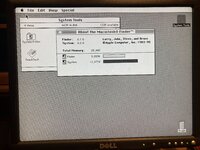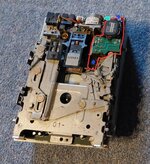bigmessowires
Well-known member
Yes I was thinking the same thing about the higher address line. From the schematic, it's the 74F258 closest to the capacitors that's responsible for that, so it might make sense. I'll investigate.
After 10 minutes with a hair dryer pointed at the sound chips, now it's working. At first I thought the front speaker wasn't working, but I didn't have it plugged in correctly.
After 10 minutes with a hair dryer pointed at the sound chips, now it's working. At first I thought the front speaker wasn't working, but I didn't have it plugged in correctly.


